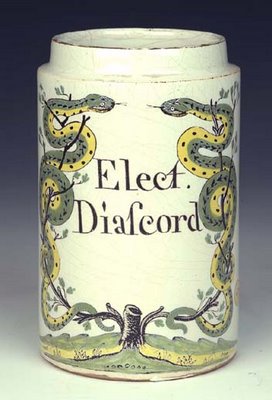
From my standpoint, the best news this week comes from Grrl Scientist.
In other news, WorldChanging discusses the finalists for this year’s Ashden Awards for Sustainable Energy. All the ideas are interesting, but this one – which was contrived by India’s Appropriate Rural Technology Institute - is especially impressive:
[N]ew compact biogas technology developed by the inspirational Dr. Karve and his team of engineers, needs only vegetable residues, waste food and grain. Its daily consumption is just 1kg of feedstock (such as waste flour, leftover food, spoilt grain, spoilt milk, over-ripe fruit, green leaves and oil cakes) as opposed to the 40kg of cow dung needed for the traditional plants. From this small amount of feedstock it produces 500 litres of gas. The digestion process is also much quicker - taking place within 48 hours instead of the 40 days required when using dung.SunPower has managed to make solar panels that are 22-percent efficient, with an output of 315 watts:
Compared with conventional solar panels, the new SPR-315 allows customers to generate up to 50 percent more power per square foot of roof area with half as many panels. If all goes as planned, you'll be able to add them to your roof in Spring 2007.A company is attempting to get electricity from lightning:
Alternative Energy Holdings plans to be the first company to tap into the natural energy produced by a thunderstorm. The company says it has successfully developed a prototype which can collect power from the ground area surrounding a strike. This power can then be converted into electricity and sold through existing power grids.Don’t know if it’ll work, but I love the idea!
An innovation I spotlighted a couple of months ago is now being field-tested:
Every step taken through ticket gates at JR Tokyo Station now helps generate electricity. East Japan Railway Co. started experimenting Monday with a device that converts vibrations from footsteps into electricity.The EU is banning power-sucking appliances that use electricity even when they’re turned off:
Televisions with wasteful standby settings and DVD players that never switch off will be banned by regulations to be proposed by Brussels tomorrow to force households to cut energy use by 20 per cent.I must say, I’d prefer that sort of authoritarianism to the brand we’ve got now.
A quart of oil goes into each 18”-square carpet sample, and these samples generally head straight for the nearest landfill after use. A new company aims to do something about it:
Tricycle has designed a digital modeling system called SIM that replaces physical sampling with a computer-generated replica which can be printed on recyclable paper, requiring no oil, and using 95% less energy and water than carpet. It's a clear example of the way technology can eliminate waste, conserve resources, and save companies money.Vermont is offering loans to help dairy farmers go organic:
Called the Organic Transition Program, it offers farmers loans of up to $20,000 to defray the costs of switching to organic dairy production.The DoD’s plan to dump VX hydrolysate in the Delaware River, which I’ve discussed numerous times, will have to undergo review by the GAO:
The bipartisan group of New Jersey lawmakers said the measure could cripple the Army's plan to dump a treated, watered-down form of the VX nerve agent called hydrolysate into the river at Deepwater, N.J.This is absolutely fascinating:
Using grammar rules alongside test tubes, biologists may have found a promising new way to fight nasty bacteria, including drug-resistant microbes and anthrax.And this is pretty amazing too:
Studying potent natural bacteria-fighters called anti-microbial peptides, biologists found that they seemed to follow rules of order and placement that are similar to simple grammar laws. Using those new grammar-like rules for how these anti-microbial peptides work, scientists created 40 new artificial bacteria-fighters.
Researchers from Indiana University Bloomington and eight collaborating institutions report in this week's Science a self-sustaining community of bacteria that live in rocks 2.8 kilometers below Earth's surface. Think that's weird? The bacteria rely on radioactive uranium to convert water molecules to useable energy.No obvious practical implications, beyond a deeper understanding of the fact that we really know very little about the place where we live.
Apropos of which, I just stumbled on a stunning Flickr set of Chinese landscapes by tictoc912.

The Museum of the History of Science has a new exhibit called Drug Trade, which comprises apothecary jars and labels from 16th to 18th century Europe.

Sydney’s marvelous Powerhouse Museum - one of my favorite places on earth - has a blog on science and sustainability issues, called Free Radicals….very interesting and nicely done.
The spectral orb in the top photo is the sun, as seen through an extreme ultraviolet imaging telescope. You can find other gorgeous solar photos here.
3 comments:
Excellent, as always. Allow me to be the inaugural member of the Bouphonia fanclub. Now if only I could figure out an animal as charismatic as the nudibranch to blog about every Friday...
Nanette:
Sensors under (or alongside, maybe) streets to harness the vibrations of cars and trucks, or on airport runways and so on? Lots of vibrations happening in those abd other places.
IIRC, there are similar experiments underway. I think I've blogged on a couple, though I'm too lazy to go looking.
Mr. Orange,
Now if only I could figure out an animal as charismatic as the nudibranch to blog about every Friday...
I suggest radiolarians.
Phila. I love your Friday hope blogging! Keep it up!
Post a Comment